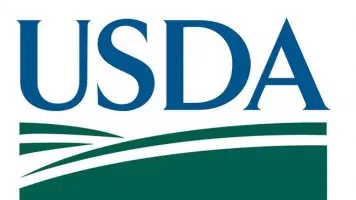
 Washington, DC-(Effingham Radio)- The New ERA clean energy program will reduce costs for rural Americans while improving grid reliability
Washington, DC-(Effingham Radio)- The New ERA clean energy program will reduce costs for rural Americans while improving grid reliability
U.S. Department of Agriculture (USDA) Secretary Tom Vilsack announced today that USDA received record demand for funding to advance affordable and reliable clean energy in rural America under key programs made possible by President Biden’s Inflation Reduction Act, the largest clean energy and climate investment in history and the largest investment ever in rural energy infrastructure. Part of Bidenomics and the President’s Investing in America agenda, these programs will lower energy costs for consumers and small businesses and create good-paying jobs across rural America.
“The Biden-Harris Administration’s Inflation Reduction Act is driving investment in rural communities across the nation, particularly in places that for too long have been left out or left behind,” Vilsack said. “Our programs are a major opportunity to build a clean energy economy in rural America that will lower energy costs, strengthen energy security, create good-paying jobs, and meet our climate goals. The response from rural America and rural electric cooperatives to these programs is a resounding ‘yes’ to federal funding for clean energy infrastructure to provide relief to farmers, rural small businesses and individuals by lowering energy costs and creating economic opportunity for generations to come.”
The Inflation Reduction Act made nearly $13 billion available to support clean energy infrastructure for rural America through USDA Rural Development programs. The funding will help eligible entities build renewable energy and zero-emission systems and make energy-efficiency improvements that will significantly increase affordability and reliability and reduce greenhouse gas emissions.
The Department has seen record-breaking demand from across the nation for the following programs:
Empowering Rural America (New ERA) Program
In May, USDA made $9.7 billion available under the New ERA program for member-owned rural electric cooperatives to help rural Americans benefit from clean, affordable and reliable energy. Rural electric cooperatives are the backbone of America’s power delivery, and this funding represents the largest increase in investment in rural America’s electric system since President Franklin Delano Roosevelt signed the Rural Electrification Act into law in 1936.
On Sept. 15, the window closed for letters of interest. USDA received 157 proposals from nearly every state and Puerto Rico for more than 750 high-quality clean energy projects in rural communities. The overwhelming response from rural electric cooperatives totaled more than two times the $9.7 billion in grant and loan funding that Congress made available for this program. These 157 proposals from rural electric cooperatives seek to:
- Serve the most in need and provide relief to rural Americans: More than 50% of letters of interest submitted indicate they will serve distressed, disadvantaged, energy or Tribal communities. If selected for funding, one applicant said it expects its proposed clean energy investments to save each household in its service area $700 per year.
- Create new investment in rural communities: The level of all submitted proposals, including leveraged private investment represents approximately $93 billion in public and private investments in rural America.
- Invest in cleaner air and a more stable climate: Taken together, the submitted proposals total 127 million tons of greenhouse gas emissions that could be reduced and avoided. This is equivalent to 24 million homes’ electricity use in one year, or 2 billion trees grown for 10 years, or removing nearly 24 million cars from the road for a year.
Powering Affordable Clean Energy (PACE) Program
In May, USDA made $1 billion available under PACE to fund new clean energy projects and energy storage in rural America.
So far, USDA has received requests for more than $7.8 billion through letters of interest. The Department expects to receive more letters of interest as it approaches the Sept. 29 deadline.
Rural Energy for America Program (REAP)
In Fiscal Year 2022, USDA received $75 million in applications under REAP to help agricultural operations and rural small business owners build clean energy systems and make energy efficient improvements.
In Fiscal Year 2023, with funding bolstered by the Inflation Reduction Act, USDA has received requests for nearly $900 million in funding.
Conservation Programs
On Sept. 19, USDA announced that it has also seen substantially more interest than funding available under the Inflation Reduction Act in USDA’s Natural Resources Conservation Service (NRCS) programs to help farmers and ranchers implement expanded conservation practices that reduce greenhouse gas emissions and increase carbon storage.
State Director of Rural Development Betsy Londrigan and Administrator of Rural Utility Services Andrew Berke also answered some questions about the programs.
Question 1: Can you explain the available programs to Illinoisans, and what issues have there been with the funding not matching demand for these programs?
Question 2: Were these programs available before the IRA? What made the demand jump so much?
Question 3: Has getting the word out for these programs been an obstacle?
Question 4: Will this create local jobs?
Question 5: Are you in communication with other state level programs to better understand the needs of rural communities?
Question 6: State lawmakers have expressed concern about keeping up with energy demands as the transition to clean energy happens. How can you make the transition to clean energy as seamless as possible?
Background
The Inflation Reduction Act is a key part of the Biden-Harris Administration’s Investing in America agenda and is the nation’s largest-ever investment to combat climate change. USDA Rural Development is moving quickly to give farmers and rural communities relief through clean energy investments that will lower energy bills for families and businesses and reduce pollution.
These investments made through the Inflation Reduction Act are powering the Biden-Harris Administration’s efforts to make USDA programs more inclusive, accessible and available to more people than ever before so that these benefits are felt for generations to come. Many of these programs are also part of President Biden’s Justice40 Initiative, which is advancing environmental justice by ensuring that 40% of the overall benefits of certain federal investments reach disadvantaged communities that are marginalized and overburdened by pollution and underinvestment.
USDA will release more information as it processes letters of interest and applications. To learn more, visit www.usda.gov.








Comments